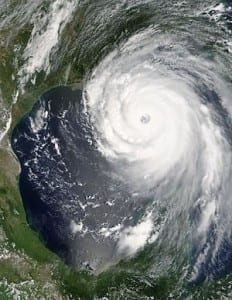One potential drawback to the idea is the impact of cloud seeding on rainfall in neighbouring regions.
They are one of the most destructive forces of nature on Earth, but now environmental scientists are working to tame the hurricane. In a paper, published in Atmospheric Science Letters, the authors propose using cloud seeding to decrease sea surface temperatures where hurricanes form. Theoretically, the team claims the technique could reduce hurricane intensity by a category.
The team focused on the relationship between sea surface temperature and the energy associated with the destructive potential of hurricanes. Rather than seeding storm clouds or hurricanes directly, the idea is to target marine stratocumulus clouds, which cover an estimated quarter of the world’s oceans, to prevent hurricanes forming.
“Hurricanes derive their energy from the heat contained in the surface waters of the ocean,” said Dr Alan Gadian from the University of Leeds. “If we are able to increase the amount of sunlight reflected by clouds above the hurricane development region then there will be less energy to feed the hurricanes.”
Using a technique known as Marine Cloud Brightening (MCB), the authors propose that unmanned vehicles could spray tiny seawater droplets, a good fraction of which would rise into the clouds above, increasing their droplet numbers and thereby the cloud reflectivity and duration. In this way, more sunlight is bounced back into space, thereby reducing sea surface temperature.
The team’s calculations, based on a climate ocean atmosphere coupling model (HadGEM1) suggest this could reduce the power of developing hurricanes by one category. Somewhat different cloud-seeding projects, designed to directly influence rainfall amounts, already exist around the world and were most famously used in China during the 2008 Beijing Olympics.
“Data shows that over the last three decades hurricane intensity has increased in the Northern Atlantic, the Indian and South-West Pacific Oceans,” said Gadian. “We simulated the impact of seeding on these three areas, with particular focus on the Atlantic hurricane months of August, September and October.”
via AlphGalileo Foundation
The Latest Streaming News: Cloud Control updated minute-by-minute
Bookmark this page and come back often
Latest NEWS
Latest VIDEO









